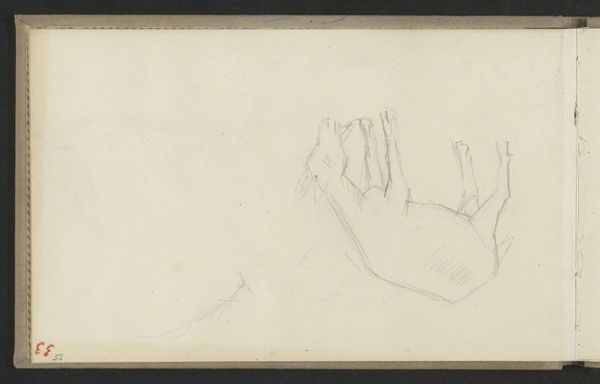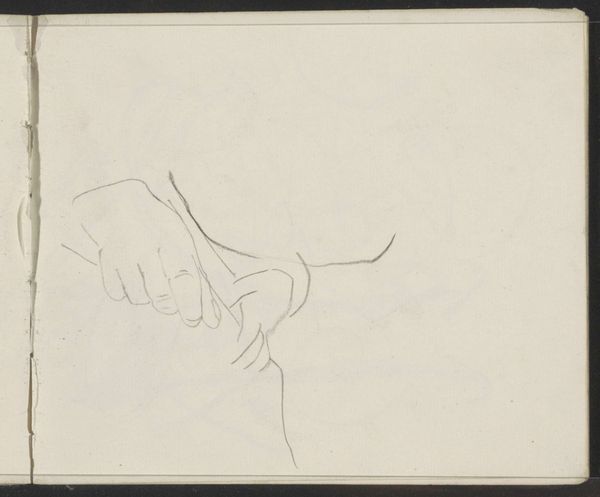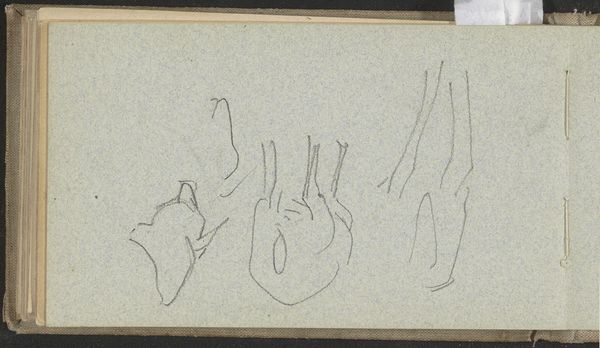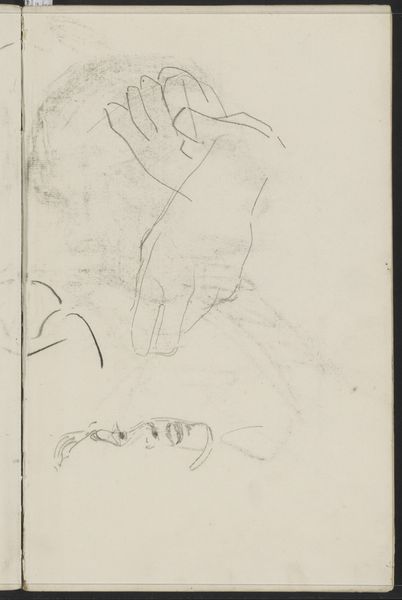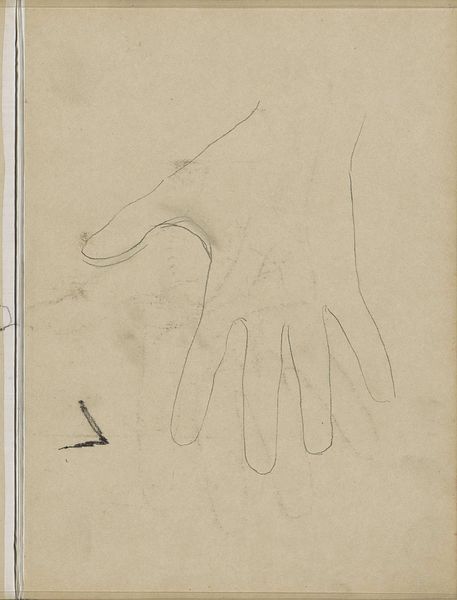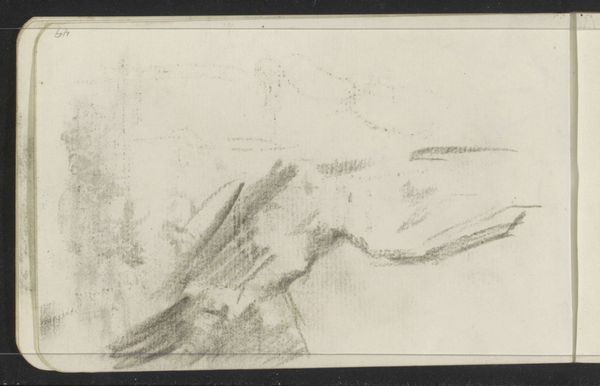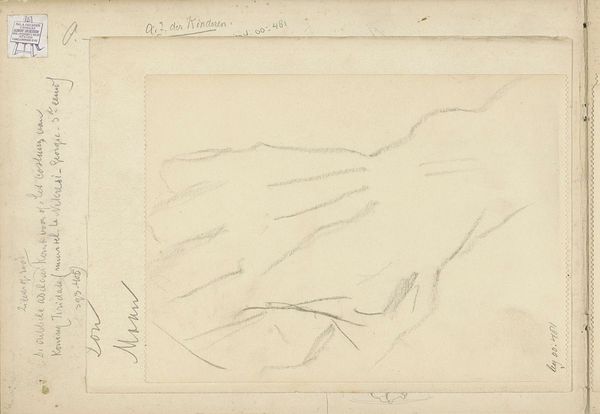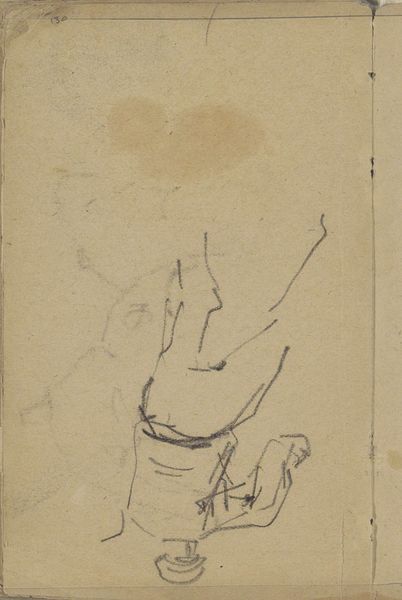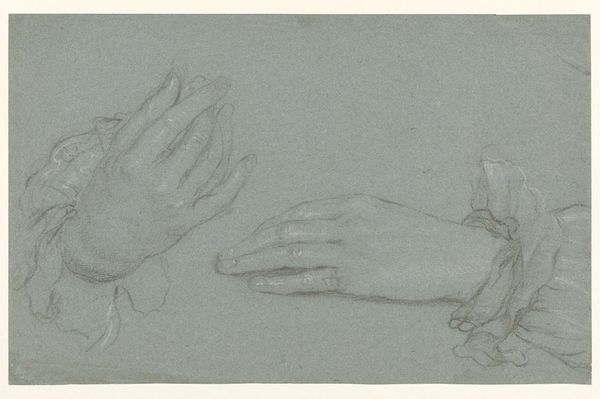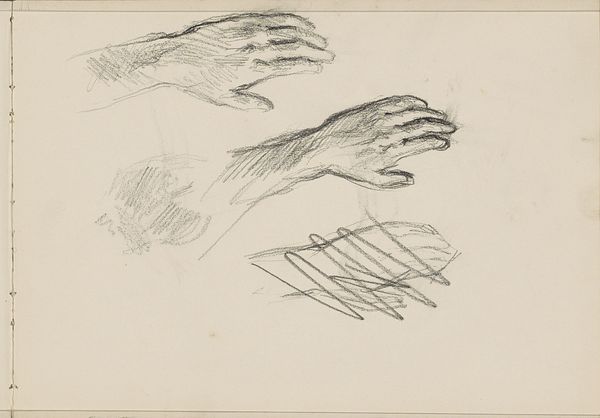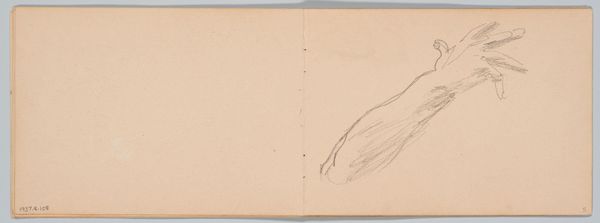
drawing, paper, pencil
#
portrait
#
drawing
#
amateur sketch
#
aged paper
#
toned paper
#
quirky sketch
#
sketch book
#
incomplete sketchy
#
paper
#
form
#
personal sketchbook
#
sketchwork
#
pencil
#
line
#
sketchbook drawing
#
sketchbook art
#
realism
Copyright: Rijks Museum: Open Domain
Editor: This drawing, titled "Hand die een blad of boek vasthoudt" - or "Hand Holding a Leaf or Book," by Antoon Derkinderen, was created sometime between 1892 and 1901 using pencil on paper. What strikes me most is the delicate, almost tentative quality of the lines. How do you read the composition? Curator: From a formalist perspective, the success of this work resides primarily in its effective use of line to create a sense of volume and form with minimal shading. The artist skillfully uses varying line weights to suggest depth and to differentiate the planes of the hand and arm. Notice, for example, the darker, more confident lines that define the contour of the fingers versus the lighter, sketchier lines used to model the forearm. Editor: That’s a great point about the line weights. I also see how the negative space around the hand is almost as important as the hand itself. It defines the gesture and creates a certain tension. Do you think that the lack of context--not knowing if it holds a book or a leaf-- adds something to its meaning? Curator: The ambiguity certainly focuses our attention on the pure form. Consider the composition’s geometry: the curves of the fingers opposed to the more linear arm. We can analyse the structure independent of any narrative. It almost transforms into an abstract study of shape and light. Editor: I see that, focusing on the line and form rather than trying to imagine a story around the image, really highlights Derkinderen's technical skill and the piece's underlying structure. Thanks for shedding light on that! Curator: Indeed. This analysis helps reveal how formal elements alone can carry significant artistic weight, divorced from representational concerns. A valuable lesson, I think.
Comments
No comments
Be the first to comment and join the conversation on the ultimate creative platform.
